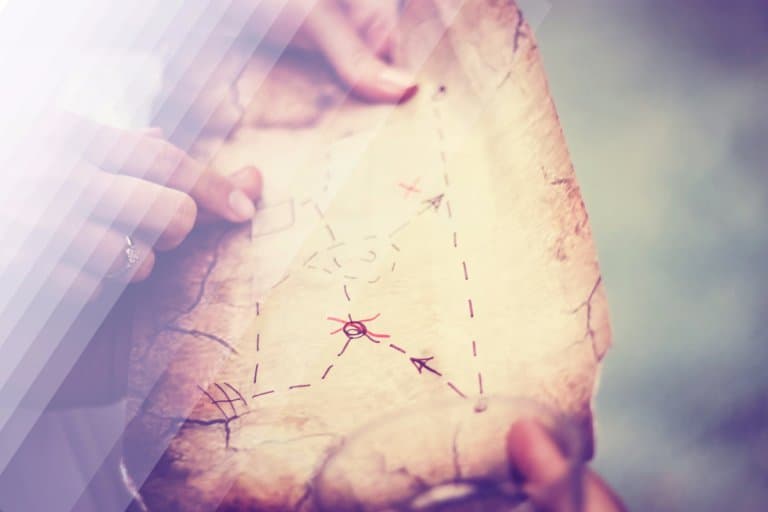How to Create a Treasure Hunt: Follow the Paper Clues

Who can resist a real-life treasure hunt? If you’ve never tried it before, here’s a step-by-step guide to creating a fun afternoon for kids of any age (I haven’t outgrown it yet).
The main idea is to find the treasure after following a trail of paper clues. The treasure hunter (or hunters) is given a slip of paper with the first clue. Solving this clue will lead you to the hiding place of the second clue, which leads to the third, and so on.
Treasure & Clues
Let’s say you have 4 clues and a treasure.
To create the treasure hunt, start with a treasure (#5). It can be anything: A small gift, a box of ice cream sandwiches, plastic baggies of candy, or dollar-store items. Decide where you’re going to “bury” the treasure.
Next, think of a clue, riddle, or puzzle for this final clue (#4), which will lead to the treasure. For example, if the treasure is hidden in the freezer (a good place if the prize is ice cream!), then this clue might read: “If I were a penguin, this would be my favorite place in the house.”
Put the slip of paper with clue #4 on it somewhere else in the house (Any hiding spot will do; think Hide-and-Seek) and then write another clue (#3) that leads to it. Clue #2 will lead to clue #3, and so on.
The easiest way to organize it is to write down the clues and their hiding spots ahead of time, then put each clue where it needs to go. Make sure nobody sees you hiding them, or it’ll ruin the fun!
A Sample List of Clues
Here’s what a finished list of treasure hunt clues might look like:
- (Handed to the treasure hunters) If I were a penguin, this would be my favorite place in the house.
- (Hidden in the freezer) A cranky fruit.
- (Hidden by the crabapple tree) If you were the tooth fairy, where would YOU look?
- (Hidden under a pillow) Tumbling, rolling, oh so warm.
- (The treasure, hidden in the dryer) Congratulations! Enjoy your surprise.
More Tips on Writing Clues
You will want at least 10 clues, even 15 or 20, depending on how long you want it to last. It goes a lot quicker than you might think).
- Make the clues easier for younger children: “Look somewhere very cold” or draw or print a picture of the next hiding place.
- Make the clues harder for older children: “Unscramble this word: EZREFER.”
- Make the clues super-hard for teens or brainiacs: “What happens at 0 Celcius?”
With a roll of tape, you could hide clues anywhere—on the ceiling, inside the toilet lid, or on the bottom of Dad’s shoe. Get creative with hiding spots and clues.
Play anywhere
My family always created treasure hunts around our house and yard, but the game could be played anywhere, even all over town for older treasure hunters. It’s also a fun activity for birthday parties. You could even create duplicate clues and have teams race for the treasure.
Have fun; anything goes!







Very nice simple guide. We do treasure hunts all the time and they get extremely complicated and always seems to turn into an "Easter" experience. Aka, you always end up with at least one missing egg haha
When I design them (kids love doing it themselves for their brothers and sisters), I always use riddles or incorporate "facts" etc. This means they're constantly running back into the home to find a page in their book or Google something. Turns out its good for P.E. as well 😀
I love the idea of incorporating facts and riddles that send kids seeking out other information sources! Great idea.